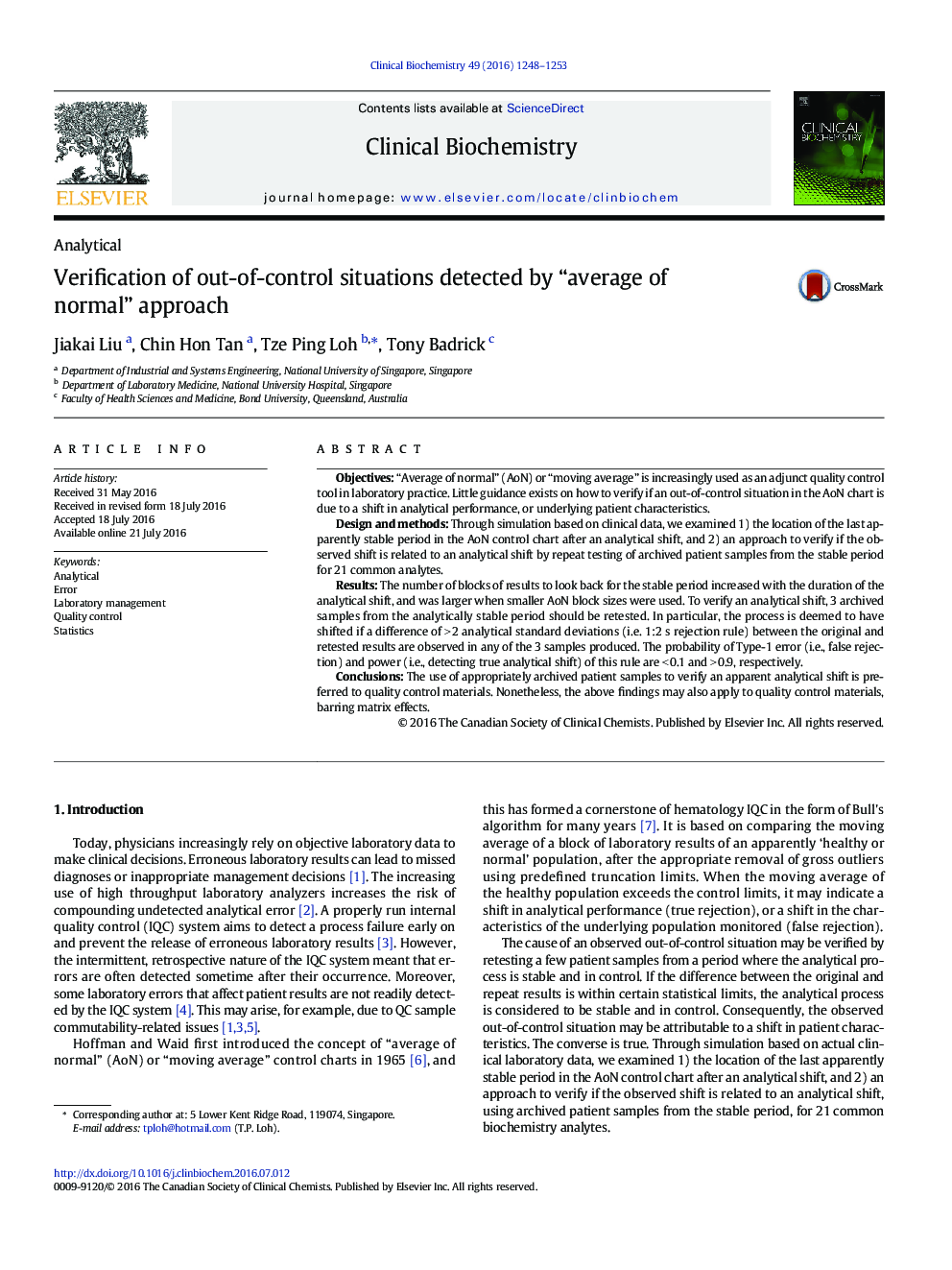| کد مقاله | کد نشریه | سال انتشار | مقاله انگلیسی | نسخه تمام متن |
|---|---|---|---|---|
| 5510151 | 1538859 | 2016 | 6 صفحه PDF | دانلود رایگان |

- Analytical or population shift can violate average of normal (AoN) control limits.
- Through simulations, we present the data for 21 common analytes.
- Derive the last stable period in the AoN control chart after an analytical shift.
- 1:2Â s QC rule applied on 3 samples optimally verifies control limit violations.
- AÂ >Â 2 SD delta in any of 3 samples from stable period suggests true analytical shift.
Objectives“Average of normal” (AoN) or “moving average” is increasingly used as an adjunct quality control tool in laboratory practice. Little guidance exists on how to verify if an out-of-control situation in the AoN chart is due to a shift in analytical performance, or underlying patient characteristics.Design and methodsThrough simulation based on clinical data, we examined 1) the location of the last apparently stable period in the AoN control chart after an analytical shift, and 2) an approach to verify if the observed shift is related to an analytical shift by repeat testing of archived patient samples from the stable period for 21 common analytes.ResultsThe number of blocks of results to look back for the stable period increased with the duration of the analytical shift, and was larger when smaller AoN block sizes were used. To verify an analytical shift, 3 archived samples from the analytically stable period should be retested. In particular, the process is deemed to have shifted if a difference of >Â 2 analytical standard deviations (i.e. 1:2Â s rejection rule) between the original and retested results are observed in any of the 3 samples produced. The probability of Type-1 error (i.e., false rejection) and power (i.e., detecting true analytical shift) of this rule are <Â 0.1 and >Â 0.9, respectively.ConclusionsThe use of appropriately archived patient samples to verify an apparent analytical shift is preferred to quality control materials. Nonetheless, the above findings may also apply to quality control materials, barring matrix effects.
Journal: Clinical Biochemistry - Volume 49, Issues 16â17, November 2016, Pages 1248-1253